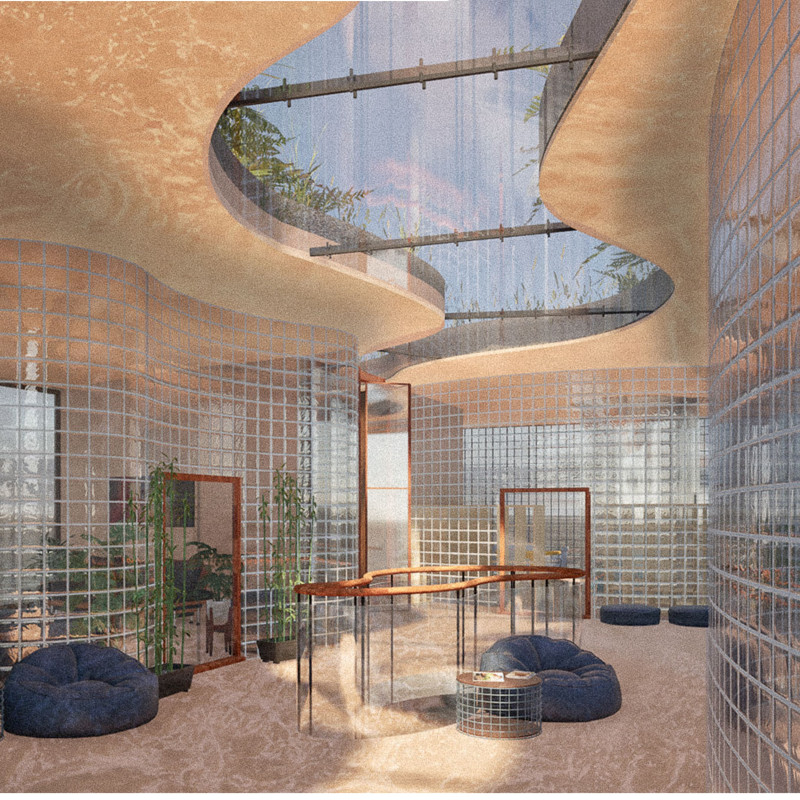5 key facts about this project
At its core, this architectural project serves multiple functions, catering to community engagement, sustainability, and aesthetic appeal. The design effectively merges these elements by creating spaces that not only accommodate activities but also foster relationships among users. Central to its mission is the vision of a versatile facility that can adapt to various social and cultural events, reflecting the diverse needs of the community it serves.
The structural layout features an open floor plan that promotes connectivity and ease of movement throughout the space. This design choice invites interaction, encouraging collaboration and engagement among visitors. The interior is characterized by well-defined zones, each selected purposefully to cater to specific activities while maintaining an overall fluidity that embodies a sense of unity within the project.
Materiality plays a significant role in the overall design ethos of this project. A careful selection of materials—such as exposed concrete, sustainably sourced timber, and high-performance glazing—contributes to both the aesthetic quality and functional performance of the building. These materials not only enhance the visual appeal but also promote durability and energy efficiency, aligning the project with current sustainable building practices.
The exterior façade displays a compelling interplay of textures and forms, with varying depths and projections creating a rhythmic pattern that draws the eye. Large windows and openings allow natural light to penetrate deep into the spaces while offering users captivating views of the surrounding landscape. This connection to the outdoors is a vital aspect of the design, as it fosters a sense of well-being and encourages occupants to engage with their environment.
Furthermore, this project incorporates landscaping elements that blend seamlessly with the architecture, reinforcing the relationship between indoor and outdoor spaces. The use of green roofs and living walls not only serves an aesthetic function but also contributes to biodiversity and environmental sustainability, showcasing a harmonious coexistence with nature.
One of the unique design approaches evident in this project is the emphasis on flexibility and adaptability. The inclusion of movable partitions allows spaces to transform based on varying needs, thereby accommodating different group sizes and activities. This adaptability is a testament to the architects’ foresight in considering future challenges and the evolving nature of community interactions.
Attention to detail is another hallmark of the design, evident in the careful consideration of user experience. Features such as integrated seating, accessible pathways, and thoughtful navigation aids ensure inclusivity and comfort for all visitors. Such meticulous planning enhances the overall functionality of the project while aligning with principles of universal design.
In exploring this architectural endeavor, one can appreciate the successful synthesis of form and function achieved through a contemporary lens. The resulting environment not only meets its intended purposes but goes further to enrich the community it inhabits. For those interested in delving deeper into the elements of this project, such as the architectural plans, architectural sections, and architectural designs, further exploration of the project presentation will unveil additional insights into its concept and performance. This examination offers a thorough understanding of how thoughtful architecture can positively influence and respond to the needs of its users.























